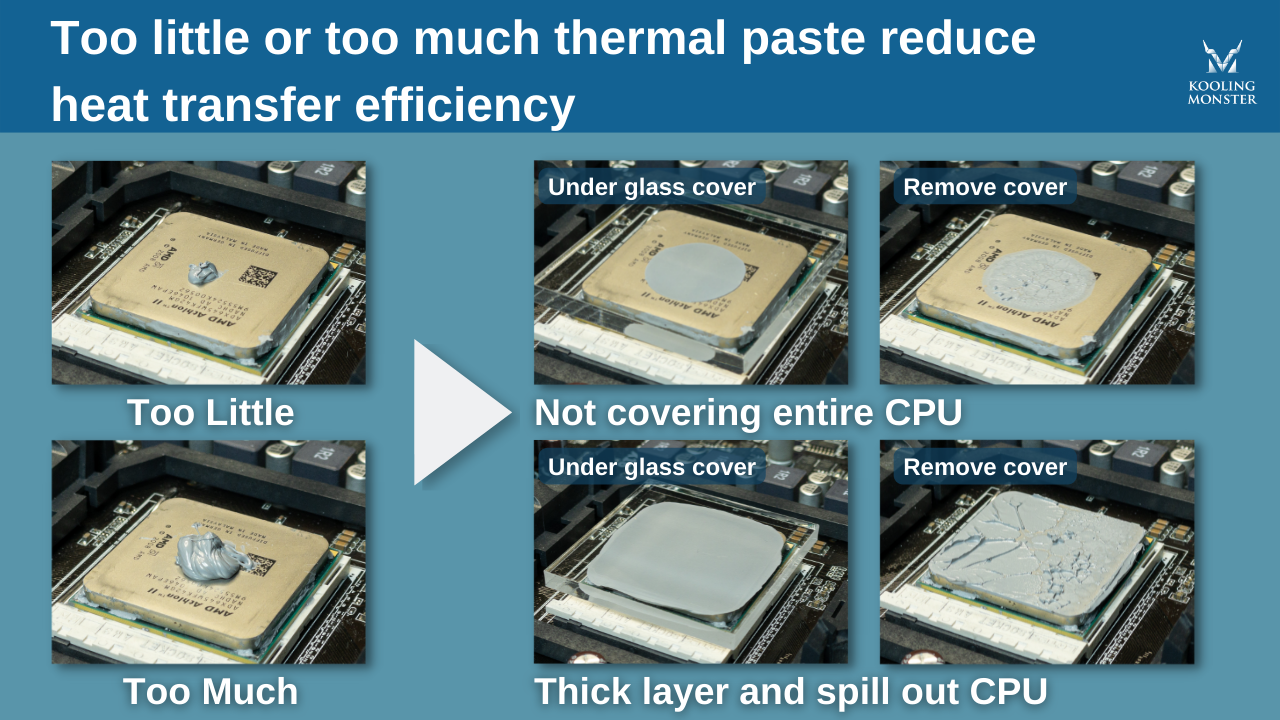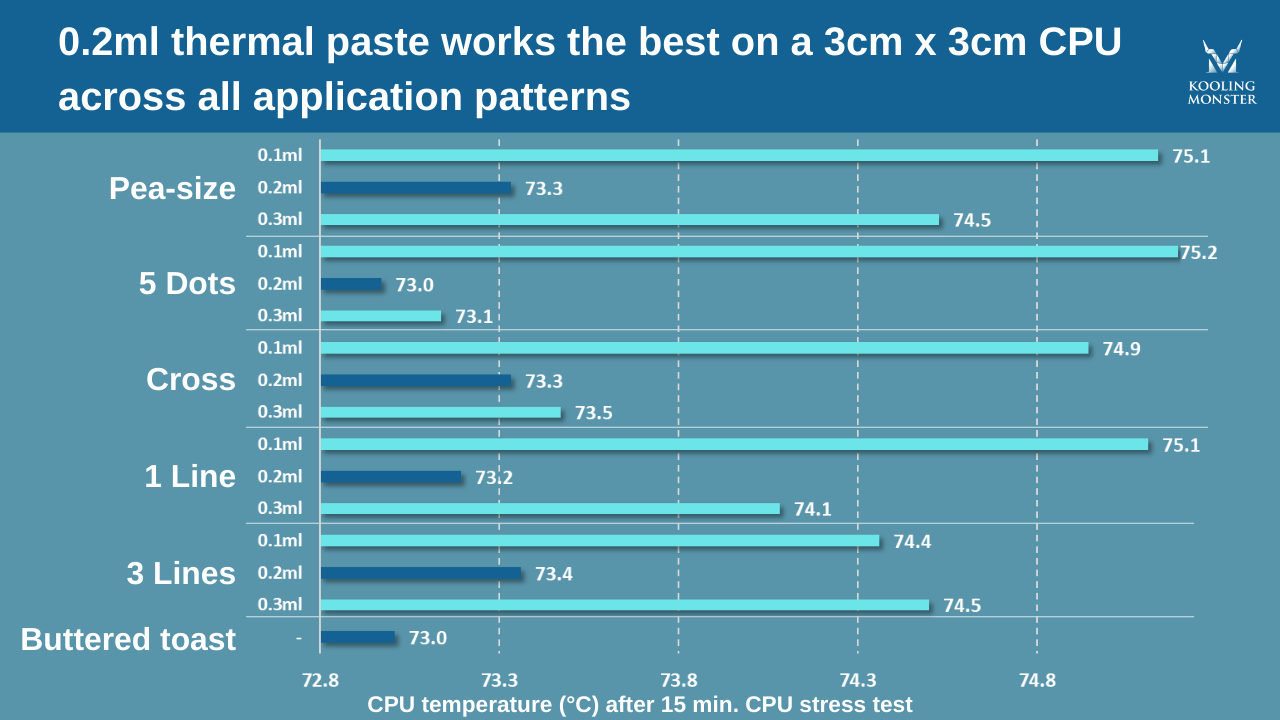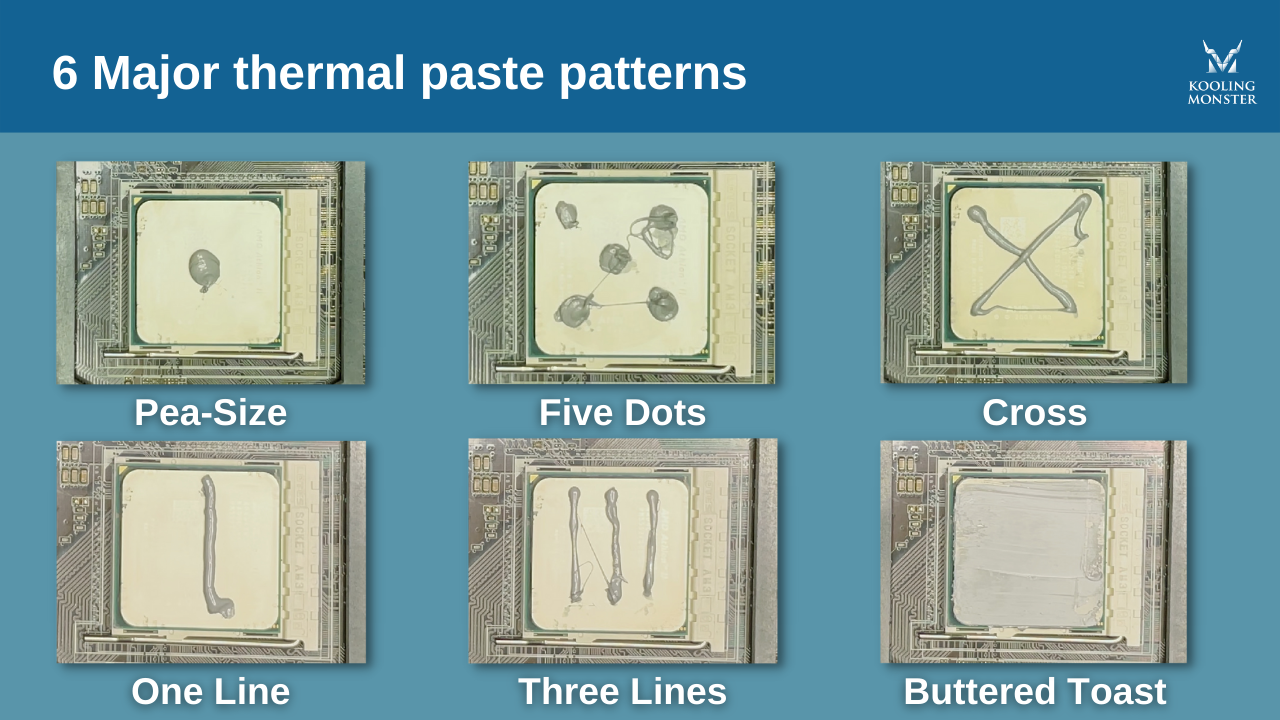What Happens With Too Little Thermal Paste
As you’re reading this, you already know the importance of thermal paste. You know it keeps your computer components cool. However, what’s not so obvious is the quantity of thermal paste one must apply.
What happens if you don’t apply enough of the thermal paste? Does your PC performance suffer? Are there any other potential consequences? Let’s find out.
How much thermal paste on the CPU is too little
It depends on the size of the CPU.
For instance, for a 30mm by 30mm CPU, 0.2ml thermal paste is sufficient. If you’d like to find the exact amount for your specific CPU, you can use our Thermal Paste Calculator. To use it, simply enter the size of your CPU in length and width, and you will see the amount you need. If you don’t know the size of your CPU, search for it on its packaging — there’s a good chance that you’ll find it there.
The other rule of thumb is to aim for a thin and even layer of thermal paste.
That means if the amount you’ve applied is covering the entirety of your CPU’s surface evenly, you’re good to go. But — if there are empty spots in the layer, you need to apply more.
Remember, the purpose of thermal paste is to fill in the tiniest of air gaps. You want to apply just enough paste to evenly fill those. Applying too much or too little is problematic.
Some people think more paste means more thermal performance, but that’s not true. More-than-needed thermal paste is also an edge case you must avoid.
Is too little thermal paste bad?
Simply put, yes.
You shouldn’t apply too little thermal paste on your CPU. If you notice gaps in the layer you’ve applied, we recommend you apply more or start over.
But why is too little thermal paste not ideal? Well, it’s simply not suited for effective thermal conductance.
As said earlier, the purpose of thermal paste is to fill in all the air gaps between the CPU and the heat sink. This ensures the heat can be transferred from the CPU to the heat sink effectively.
If the thermal paste you have applied is insufficient, it won't be able to fill in all the air gaps. Hence, the heat will not be able to travel from the CPU to the heat sink in the best possible way.
We have conducted an extensive case study to observe the performance of a CPU when enough thermal paste is applied and when it's not.
According to our case study, a CPU that doesn't have enough thermal paste performs substantially worse than the one which has. In most cases, a CPU with too little thermal paste performs even worse than a CPU with too much thermal paste.
Want to read our full case study? Read “Estimate How Much Thermal Paste You Need on CPU/GPU With a Calculator”.
When do you accidentally put too little thermal paste?
So, when are you likely to put too little thermal paste on your CPU? Well if you are using the one-line or one-dot method, then you are most likely to end up with too little thermal paste, especially if you don't have any experience.
On the other hand, if you use methods like three-lines, cross, or 5-dots, then you are likely to end up with more-than-needed thermal paste.
If you use the buttered toast method, you have the maximum probability of applying just enough thermal paste. That's because, in this method, you can actually see how much thermal paste you have applied before putting the heat sink down.
The other five methods rely on the force put by the heat sink on the CPU. So if you have applied insufficient thermal paste, you won't be able to see it without lifting the heat sink again.
What is the correct amount of thermal paste?
Again, it depends on the size of your CPU.
If you’ve put just enough paste to cover its entire surface, you’ve got the right amount there. But if the surface isn’t covered, or thermal paste is dripping from the sides of the CPU after you put the seat sink down, there’s a problem.
After you’ve found the correct amount of thermal paste needed for your CPU using our Thermal Paste Calculator, apply the amount using any of the 6 application methods.
If you’re a beginner, we recommend using the buttered toast method, as it will let you spread the paste with a spatula beforehand, so you can see if the amount you’re applying is enough to cover the entire surface. If it is, you’re good to go. If it’s not, you can apply more.
If you’ve applied too much paste, you can use rubbing alcohol, or even better, use Kooling Monster KLEAN-01 Compound Cleaner. If you’ve messed up the application, you can use KLEAN-01 to completely remove the applied paste, and start over.
The bottom line
Thermal paste is an essential part of your CPU’s thermal management system. However, just like all things, too much or too little of it is bad.
The simple rule is to try to get a thin and even layer of thermal paste on your CPU. That’s just enough to get the job done effectively.
FAQ
How does the application method influence the amount of thermal paste used?
The method of application can affect the amount of thermal paste used. Methods like the "dot" or "line" usually require less paste than the "spread" method, which needs a thin layer covering the entire CPU.
Why is a thin and even layer of thermal paste recommended?
A thin and even layer ensures optimal heat transfer between the CPU and the cooler. Excess paste can create a layer of insulation, hindering heat transfer and potentially causing overheating.
What should be done if too little thermal paste has been applied?
If too little thermal paste has been applied, the CPU cooler should be removed, the old paste cleaned off, and a new, adequate amount reapplied before reattaching the cooler. View more about KOLD-01 Thermal Paste🔗
How can I calculate the correct amount of thermal paste for my CPU?
Generally, a pea-sized amount (or grain of rice for smaller CPUs) is enough. However, the CPU's surface area and the paste's specific instructions should be considered. It's not a precise calculation, more a rule of thumb. Go to Calculaor🔗




